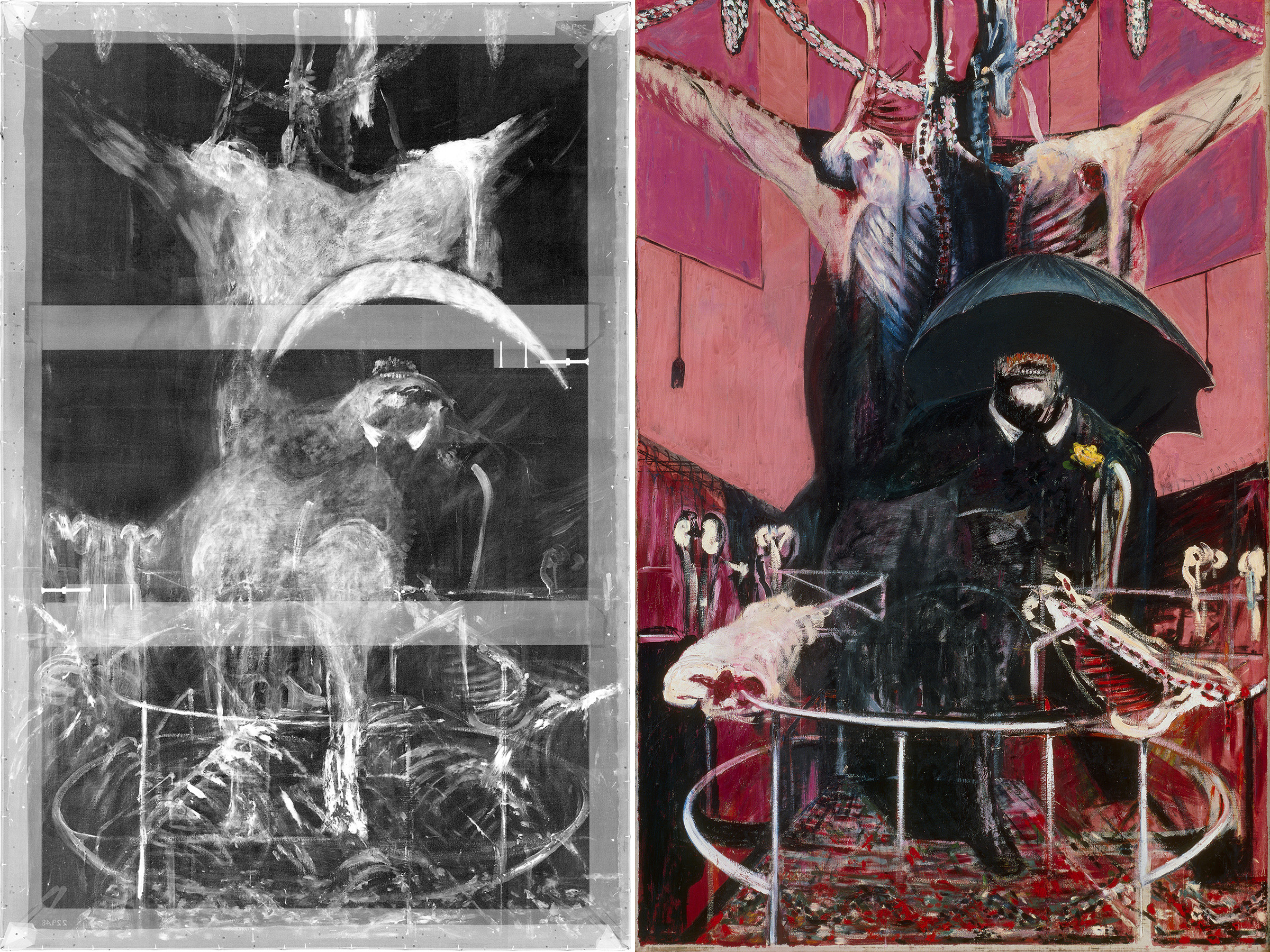
Oil and pastel on canvas. CR number 46-03.
© The Estate of Francis Bacon / DACS London 2020. All rights reserved.
X-rays of paintings often offer tantalizing glimpses into the true nature of an artist’s process. This is spectacularly demonstrated in the above-pictured X-ray of Painting 1946. The X-ray shows how Bacon’s quoted intention – that of painting a bird of prey landing in a ploughed field – evolved into the now-famous ‘butcher’s shop picture’ (as Bacon sometimes called it).
The X-ray of this work illustrates significant alterations, particularly in the lower half of the canvas, which Bacon carried out as he worked. The ambiguous shapes in the centre of the painting along with a large number of brushstrokes and compositional elements are shown to have been covered up or transformed as the painting was completed.
The X-ray also illustrates that the hanging animal carcass behind the main figure was initially a solid shape but was later divided using deep black and red pigments. Upon completing the canvas, Bacon solidified it into a shape similar to the other crucifixion scenes seen throughout his oeuvre.
Bacon scholar, Martin Harrison, has suggested that Painting 1946 was somewhat less a result of chance than Bacon initially let on. However, the differences between Bacon’s spoken and material histories for this work have made it difficult for researchers to construct an accurate story of its production.
“Painting 1946 made its public debut at the Redfern Gallery, London, in July 1946. In the context of post-war British art it was exceptionally large and ambitious, although its imagery was mainly perceived as provocative and perplexing. Bacon regarded Painting 1946 as epochal, and as a defining event in his career.”
Excerpt from Martin Harrison, FSA. Painting 1946, Francis Bacon: Catalogue Raisonné 2016, pages 170-174.
Read the painting’s exhibition history and selected bibliography here.
Francis Bacon: Catalogue Raisonné can be purchased through our distributors’ website.